Abstract
Nutritionally variant streptococci (NVS), which account for 5 to 10% of all cases of streptococcal endocarditis, were recently subdivided into three serotypes. In the past, using a rabbit endocarditis model, I demonstrated that by immunization of rabbits with NVS and by challenge with a strain from the homologous serotype a level of 90 to 100% protection was elicited. In the present study, the level of cross-protection between strains from different serotypes was measured. No cross-protection was demonstrated between serotype I and II or III strains. However, significant cross-protection was observed when serotype II and III strains were analyzed in the model. Since high levels of immunoglobulin G were demonstrated against the surface of the NVS after immunization, passive transfer experiments were initiated. Even at comparable levels of surface immunoglobulin G, none of the rabbits given immune globulin were protected against challenge with a dose of live NVS that equaled 20 times the 50% infective dose. Therefore, it appears that components from the immune system, in addition to humoral components, are required for active protection against NVS endocarditis.
Full text
PDF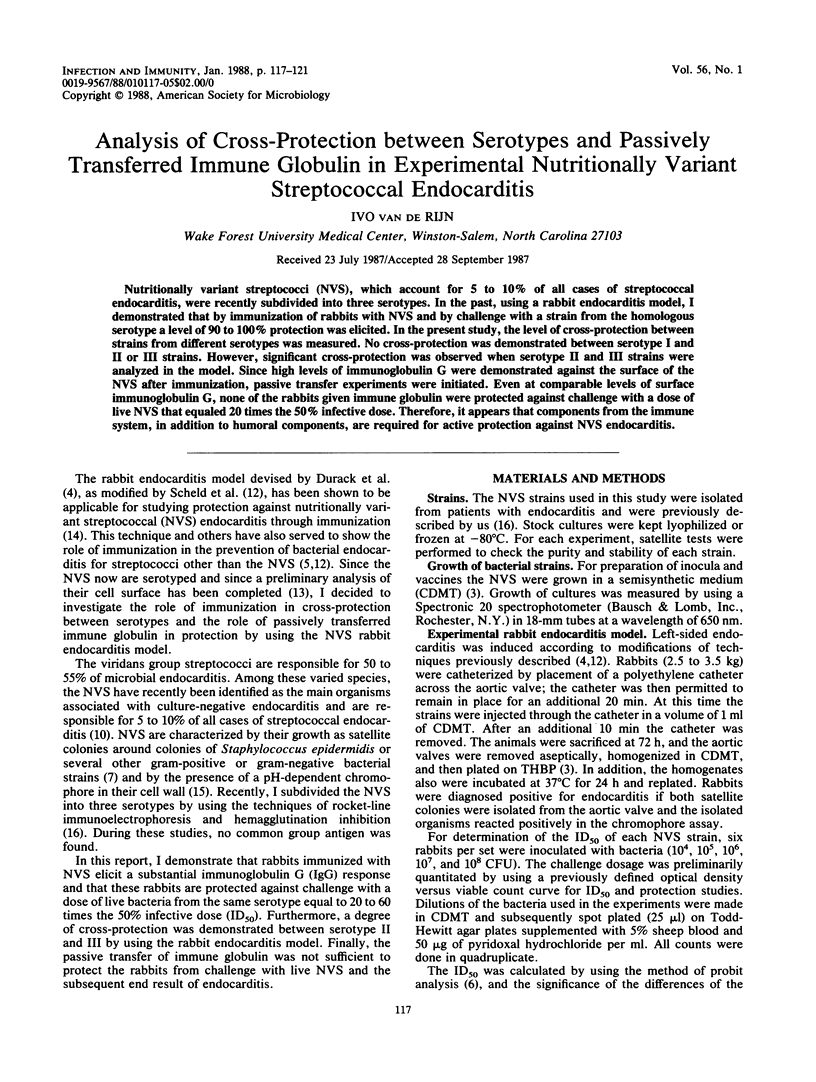
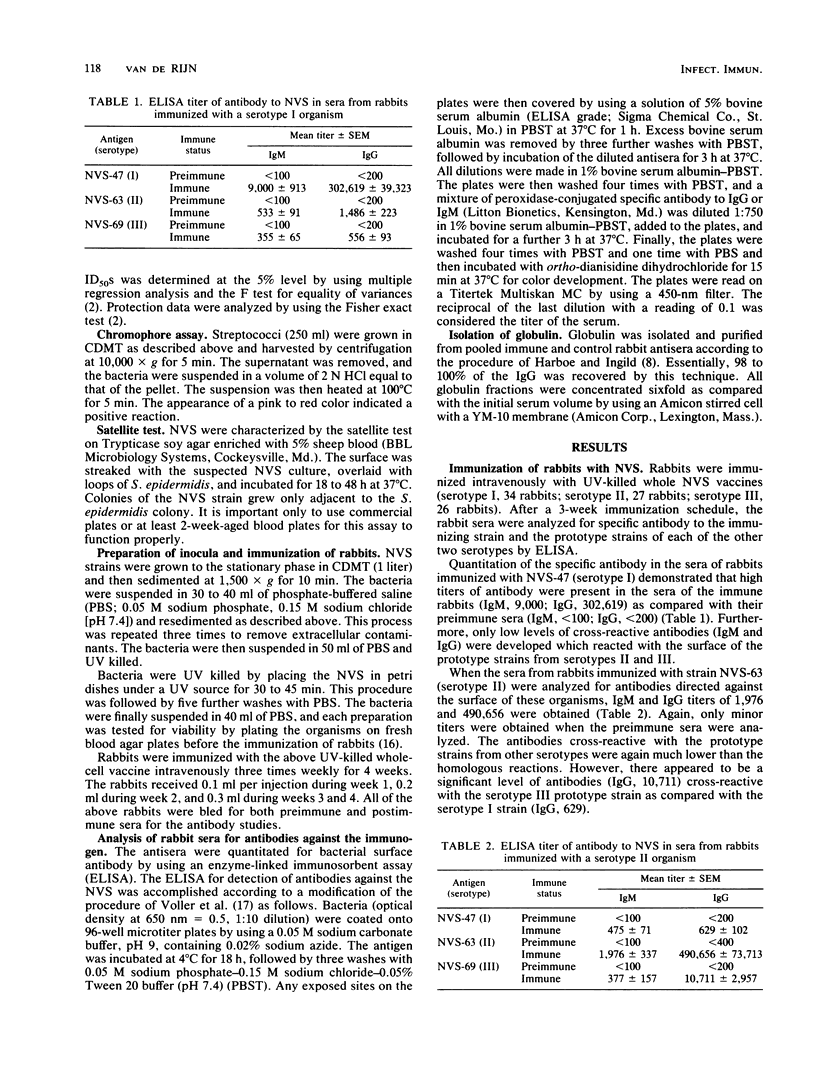
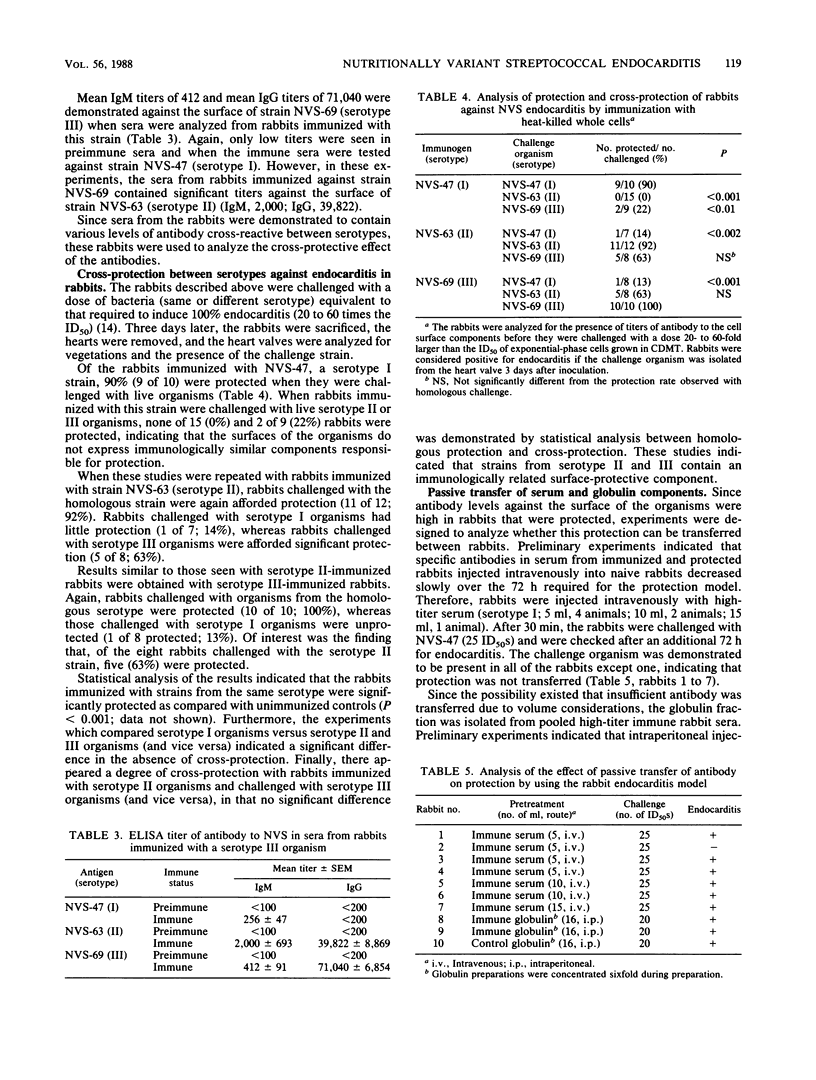
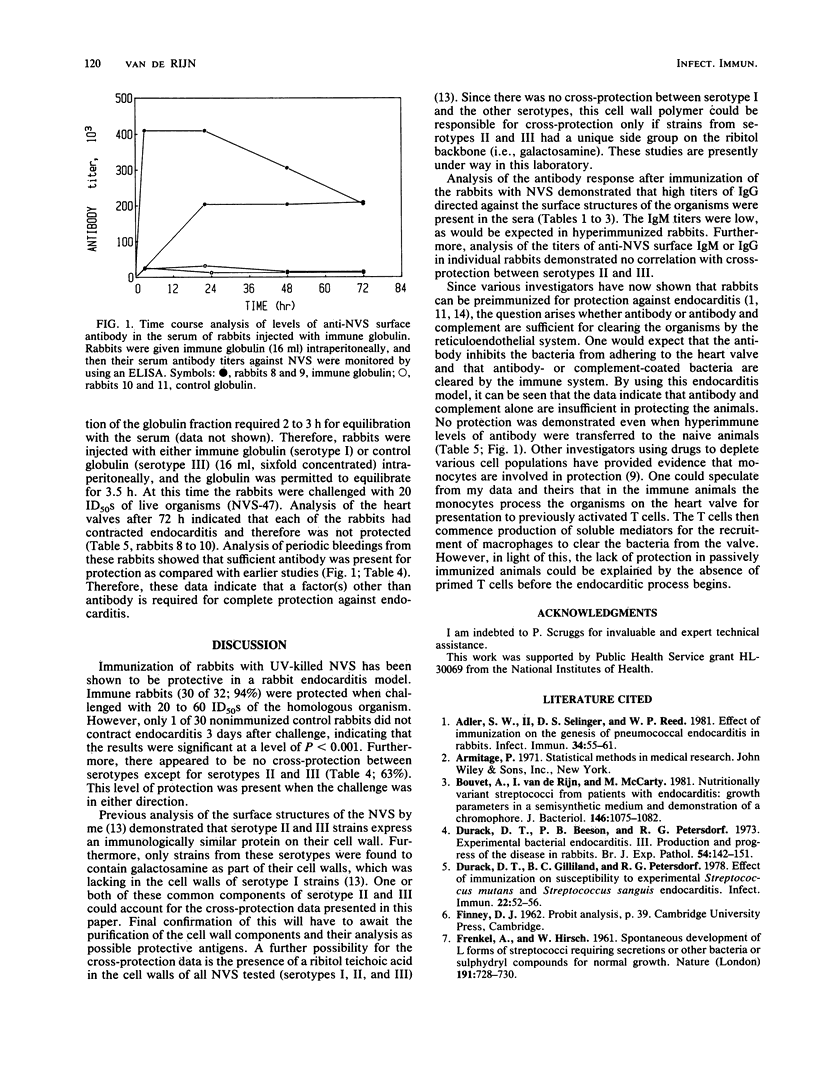
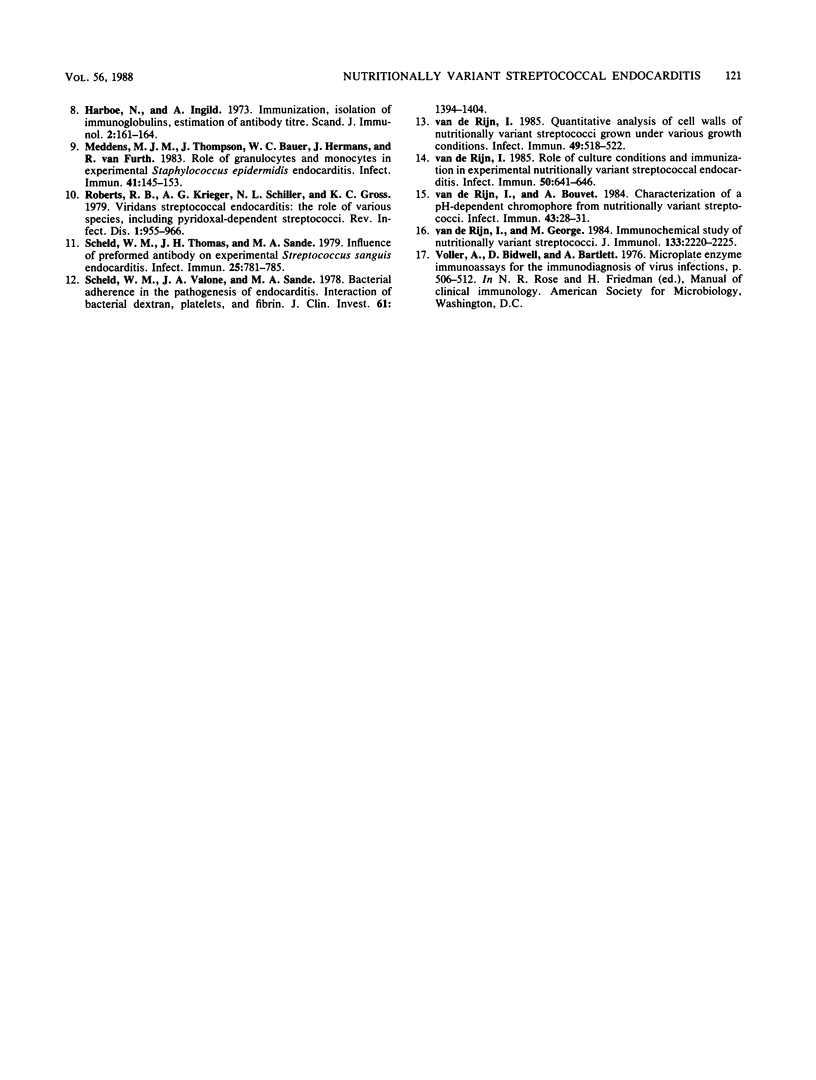
Selected References
These references are in PubMed. This may not be the complete list of references from this article.
- Adler S. W., 2nd, Selinger D. S., Reed W. P. Effect of immunization on the genesis of pneumococcal endocarditis in rabbits. Infect Immun. 1981 Oct;34(1):55–61. doi: 10.1128/iai.34.1.55-61.1981. [DOI] [PMC free article] [PubMed] [Google Scholar]
- Bouvet A., van de Rijn I., McCarty M. Nutritionally variant streptococci from patients with endocarditis: growth parameters in a semisynthetic medium and demonstration of a chromophore. J Bacteriol. 1981 Jun;146(3):1075–1082. doi: 10.1128/jb.146.3.1075-1082.1981. [DOI] [PMC free article] [PubMed] [Google Scholar]
- Durack D. T., Beeson P. B., Petersdorf R. G. Experimental bacterial endocarditis. 3. Production and progress of the disease in rabbits. Br J Exp Pathol. 1973 Apr;54(2):142–151. [PMC free article] [PubMed] [Google Scholar]
- Durack D. T., Gilliland B. C., Petersdorf R. G. Effect of immunization on susceptibility to experimental Streptococcus mutans and Streptococcus sanguis endocarditis. Infect Immun. 1978 Oct;22(1):52–56. doi: 10.1128/iai.22.1.52-56.1978. [DOI] [PMC free article] [PubMed] [Google Scholar]
- FRENKEL A., HIRSCH W. Spontaneous development of L forms of streptococci requiring secretions of other bacteria or sulphydryl compounds for normal growth. Nature. 1961 Aug 12;191:728–730. doi: 10.1038/191728a0. [DOI] [PubMed] [Google Scholar]
- Harboe N., Ingild A. Immunization, isolation of immunoglobulins, estimation of antibody titre. Scand J Immunol Suppl. 1973;1:161–164. doi: 10.1111/j.1365-3083.1973.tb03798.x. [DOI] [PubMed] [Google Scholar]
- Meddens M. J., Thompson J., Bauer W. C., Hermans J., van Furth R. Role of granulocytes and monocytes in experimental Staphylococcus epidermidis endocarditis. Infect Immun. 1983 Jul;41(1):145–153. doi: 10.1128/iai.41.1.145-153.1983. [DOI] [PMC free article] [PubMed] [Google Scholar]
- Roberts R. B., Krieger A. G., Schiller N. L., Gross K. C. Viridans streptococcal endocarditis: the role of various species, including pyridoxal-dependent streptococci. Rev Infect Dis. 1979 Nov-Dec;1(6):955–966. doi: 10.1093/clinids/1.6.955. [DOI] [PubMed] [Google Scholar]
- Scheld W. M., Thomas J. H., Sande M. A. Influence of preformed antibody on experimental Streptococcus sanguis endocarditis. Infect Immun. 1979 Sep;25(3):781–785. doi: 10.1128/iai.25.3.781-785.1979. [DOI] [PMC free article] [PubMed] [Google Scholar]
- Scheld W. M., Valone J. A., Sande M. A. Bacterial adherence in the pathogenesis of endocarditis. Interaction of bacterial dextran, platelets, and fibrin. J Clin Invest. 1978 May;61(5):1394–1404. doi: 10.1172/JCI109057. [DOI] [PMC free article] [PubMed] [Google Scholar]
- van de Rijn I., Bouvet A. Characterization of a pH-dependent chromophore from nutritionally variant streptococci. Infect Immun. 1984 Jan;43(1):28–31. doi: 10.1128/iai.43.1.28-31.1984. [DOI] [PMC free article] [PubMed] [Google Scholar]
- van de Rijn I., George M. Immunochemical study of nutritionally variant streptococci. J Immunol. 1984 Oct;133(4):2220–2225. [PubMed] [Google Scholar]
- van de Rijn I. Quantitative analysis of cell walls of nutritionally variant streptococci grown under various growth conditions. Infect Immun. 1985 Sep;49(3):518–522. doi: 10.1128/iai.49.3.518-522.1985. [DOI] [PMC free article] [PubMed] [Google Scholar]
- van de Rijn I. Role of culture conditions and immunization in experimental nutritionally variant streptococcal endocarditis. Infect Immun. 1985 Dec;50(3):641–646. doi: 10.1128/iai.50.3.641-646.1985. [DOI] [PMC free article] [PubMed] [Google Scholar]


